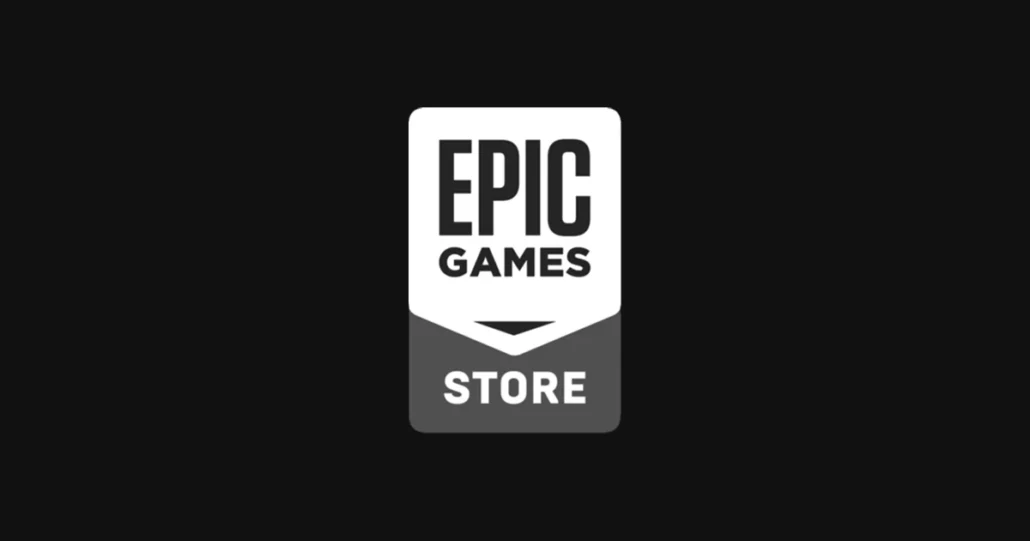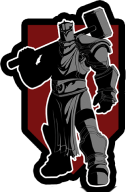In the ever-evolving world of indie game development, launching your game is no longer just about clicking “publish.” It’s about selecting the right indie game launchpad: a platform that aligns with your vision, reaches your audience, and gives your project the best shot at success. In 2025, the indie scene is more crowded, competitive, and platform-driven than ever. From the algorithmic discoverability of Steam to the niche curations of itch.io, each platform offers unique strengths and pitfalls.
This blog about Top Indie Game Platforms in 2025 by Polydin Game Art Outsourcing is your strategic map for navigating the indie game launchpad landscape. Whether you’re a solo dev, a small studio, or a first-timer with a passion project, understanding the tools, economics, and ecosystems behind each publishing platform will determine more than just your sales numbers. It could shape the trajectory of your entire career. Let’s explore what matters most and where your game truly belongs.
Why Your Platform Choice Defines Your Destiny
The Indie Game Launchpad that features your game can help it reach heights you never even dreamed or seal the fate of your game and make it dead on arrival. Here are a couple of reasons why this choice is so important.
Unlocking Audience Reach
The first promise any platform makes is access to players. But not all audiences are created equal. Some platforms specialize in hardcore PC gamers, others in casual mobile users. A strategy game may thrive on GOG, while an arcade roguelike finds traction on Switch. Understanding who lives on each platform—and how they discover new games—can be the difference between a modest hit and a quiet launch. Don’t just ask where you can launch; ask who you’ll be launching to.

Maximizing Revenue Potential
Not every sale pays the same. Platforms take different cuts—some offer dev-friendly splits, others demand exclusivity. Beyond revenue share, some stores support frequent sales events, seasonal promos or curated showcases that can spike earnings. Payment models also matter: free-to-play, premium, DLC-heavy, or subscription-friendly? Revenue isn’t just a function of traffic; it’s a matter of how each platform lets you monetize your game’s design and format.
Leveraging Marketing and Discovery
Getting seen in a crowded marketplace is half the battle. Steam’s wishlist and visibility algorithms, Epic’s rotating spotlight, and console storefronts’ featured tiles can make or break launch week. Some platforms reward devs who engage early with pre-launch marketing tools; others leave you to fend for yourself. The difference? One gives you a shot at going viral. The other buries you six pages deep. Your platform should work with you to build hype—not just offer shelf space.
Developer Support Ecosystem
Bugs happen. So do last-minute builds and content updates. When they do, responsive support, good documentation and active dev forums become lifelines. Some platforms offer all three. Others… don’t. A healthy ecosystem isn’t a luxury—it’s a backbone for your post-launch momentum. A platform with tools and people to help you ship smoothly is worth more than a million installs.
Key Criteria for Evaluating a Publishing Platform in 2025
Not every indie game launchpad is built the same. While hype often surrounds the “big” names, indie developers need to look under the hood. Choosing a platform in 2025 means weighing more than visibility. You’re evaluating support, economics, culture, and growth potential. Here are the essential factors to guide your decision.
Developer-Friendly Revenue Share
Revenue splits can dictate your entire financial outcome. While Steam still holds a 70/30 split (with slight improvements for top earners), Epic Games Store leads with an 88/12 model. Some platforms offer custom deals or better terms for exclusivity. Before jumping in, understand what each percentage point means for your studio’s sustainability and whether strings are attached.
Robust User Base & Discoverability
Having millions of users doesn’t matter if none of them see your game. Discoverability tools—algorithms, tags, trending sections, wishlists—are now just as important as audience size. Steam is saturated but powerful if you play its systems right. itch.io is small but extremely dev-friendly. Ask not just how many people use a platform, but how likely they are to find and care about your game.
Comprehensive Development Tools & Resources
From SDK integration to patching tools, a good platform saves time and headaches. Look for thorough documentation, sandbox testing environments, build automation, and seamless engine compatibility (especially Unity and Unreal). Platforms that streamline certification, localization, and QA will free your team to focus on polish and gameplay, not paperwork.
Read Also: The Ultimate Guide to Indie Game Developer Tools

Active Community & Support Systems
A healthy platform community isn’t just for players—it’s for developers, too. Peer forums, Discord servers, troubleshooting support, and responsive partner management can turn a technical issue into a solved problem. You’re not just publishing a game—you’re entering an ecosystem. Choose one where you won’t be shouting into the void when something breaks.
Niche Alignment and Genre Fit
Certain platforms attract certain genres. GOG fans love story-rich RPGs. Mobile stores lean casual. itch.io embraces experimental or narrative-forward titles. Choosing a platform where your genre is expected—even beloved—can dramatically boost traction. Your game doesn’t need to fit everywhere. It needs to flourish somewhere.
The Top Platforms for Indie Game Publication in 2025: An In-Depth Look
If you’re looking for an indie game launchpad to publish your game, these are some of the best choices you have in 2025:
Steam
Steam remains the default indie game launchpad for many developers and for good reason. Its vast user base, robust infrastructure, and mature discovery tools make it the most established digital storefront on PC. Steamworks integration gives access to achievements, cloud saves, trading cards, and mod support. The visibility algorithms are complex, but when optimized through wishlisting, frequent updates, and player engagement, they can propel a game into the “popular upcoming” or “trending” charts with significant momentum.
However, with tens of thousands of titles launching yearly, visibility is increasingly a challenge. While Steam offers great tools, it demands proactive use: pre-launch campaigns, demos during Next Fest, active community-building through forums and devlogs. Steam no longer guarantees discovery—it offers potential, not promise. Still, for its infrastructure, revenue potential, and ecosystem, it’s an essential piece of many successful indie release strategies.
Epic Games Store
The Epic Games Store continues to position itself as the most developer-friendly AAA-adjacent storefront. With an 88/12 revenue split and no platform fees, it’s especially attractive for smaller studios aiming to retain more of their profits. Epic also offers grant programs and minimum guarantees for select exclusives, which can significantly reduce financial risk.
While its user base is smaller than Steam’s, Epic boasts high engagement thanks to its weekly free game giveaways and partnerships with major publishers. The platform’s curated nature—while limiting volume—can actually help standout indies receive front-page exposure. That said, the store’s lack of user reviews, community forums, and modding support still makes it feel less “social” than Steam.
For devs looking to cut through the noise with solid financial terms and support from a major player, Epic is a strong contender, especially if you’re willing to negotiate exclusivity.
Console Ecosystems (PlayStation, Xbox, Nintendo Switch)
Consoles offer prestige and pressure. Launching on platforms like PlayStation, Xbox, or Nintendo Switch can dramatically increase your game’s reach and perceived legitimacy. Players often associate console releases with higher quality and more polished experiences, giving you a reputational boost alongside financial opportunity.
Each console has its own indie onboarding program: ID@Xbox, PlayStation Indies, and Nintendo’s developer portal. These come with varying levels of technical and account approval hurdles. You’ll need dev kits, certification compliance, and often a publisher or aggregator partner (especially on Sony and Nintendo). That said, once you’re in, the reward can be substantial—highlight placement on the storefront, dedicated indie showcases, and a loyal player base hungry for smaller-scale titles.
Switch, in particular, remains an indie darling in 2025, especially for pixel art, platformers, and roguelikes. Xbox continues to be friendly to experimental titles, with Game Pass offering massive reach. PlayStation offers strong prestige but can be harder to access for very small studios.
Consoles are rarely your first launchpad, but they’re an excellent second wave if you’ve already proven your title elsewhere.
Read Also: Top 10 Indie Games in 2024
Mobile Platforms (Apple App Store & Google Play)
Mobile is a behemoth. but not for the faint of heart. The App Store and Google Play give you access to billions of users, but the competition is fierce, and the monetization models skew heavily toward free-to-play, ad-supported, or hybrid systems. Premium (pay-once) games remain a niche, though Apple Arcade and curated indie collections have slightly revived interest.
Developers aiming for mobile must consider not just gameplay adaptation but UX design, touch input optimization, and performance scaling. You’ll also contend with rigorous submission policies and, increasingly, privacy regulations and compliance requirements.
Still, for puzzle games, narrative apps, idle clickers, and bite-sized arcade experiences, mobile remains a viable—if challenging—indie game launchpad. Tools like Unity and cross-platform engines make porting easier than ever, and with the right marketing plan, it’s possible to succeed in niche markets or ride seasonal virality.
itch.io
itch.io remains the most creator-controlled platform in the space. It lets developers set their own revenue split, customize storefronts, run pay-what-you-want models, and even sell physical or bonus content directly. It’s especially beloved by solo devs, experimental artists, and developers focused on community interaction over mass commercial success.

Discovery on itch.io is limited compared to the larger platforms, but its player base tends to be deeply supportive and willing to engage with raw, early-stage, or unconventional projects. It’s an excellent place to prototype, collect feedback, and build a loyal following.
If your game is genre-bending, artistically niche, or still in development, itch.io can be a great soft-launch platform—one that prioritizes connection over profit.
GOG.com
GOG (formerly Good Old Games) caters to a very specific—but loyal—audience: PC gamers who value DRM-free titles, story-rich experiences, and retro or classic aesthetics. It’s a curated storefront, meaning your game must be approved, but that curation also limits noise and increases discoverability for accepted titles.
GOG’s Galaxy client and infrastructure have improved in recent years, offering cloud saves, achievements, and patching systems. However, it’s still smaller in audience and feature set than Steam. Where it shines is in authenticity—fans trust GOG, and when your game is featured, it often receives deeper engagement.
If your project aligns with GOG’s ethos—think RPGs, tactical games, or retro-inspired indies—it can be an excellent secondary platform with minimal competition and a surprisingly loyal user base.
Final Words: Your Strategic Launch in 2025
There’s no single “best” indie game launchpad—only the one that best aligns with your game’s genre, goals, and resources. In 2025, launching a game is as much about business strategy as it is about creative vision. The platform you choose can determine how you’re discovered, how you’re paid, and how your studio grows beyond your first release. For many developers, the smartest move isn’t picking just one launchpad—it’s a phased, multi-platform strategy. Start with a flexible and supportive ecosystem like itch.io or Steam to build traction, gather feedback, and improve visibility.
Then leverage that momentum into console ports, Epic exclusivity, or niche platforms like GOG for additional revenue and reach. Treat each platform not as a sales terminal, but as a unique ecosystem—one that either supports your journey or demands constant compromise. Learn its rhythms. Use its tools. Understand its audience. And most importantly: don’t rush it. A strategic launch, even delayed, will outperform a rushed one every time. The indie scene may be competitive, but it still rewards thoughtful, well-executed games with authentic voices. Your game deserves a platform that gets it. Choose wisely, launch strategically and let 2025 be the year you level up.



